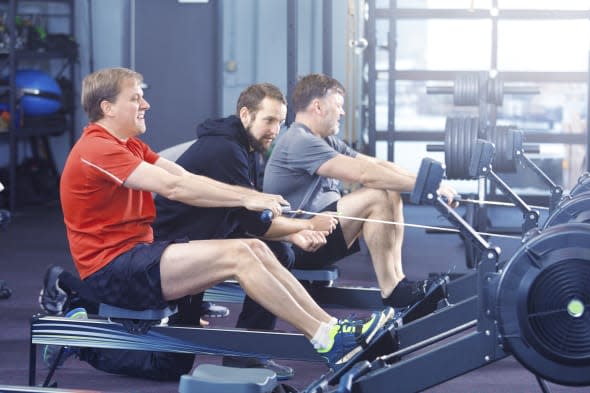Rowing for fitness

Why would you want to bother with an obscure hobby like rowing when you could just take up jogging, cycling or swimming instead? Well, maybe because rowing offers a fantastic full-body workout which is great for developing core strength.
Related Searches
The benefits
While you do pull with your arms and they definitely get a workout, most of the actual work is done through your legs – using your core and upper body to stabilise and hold the oars as you row. It offers an excellent cardiovascular workout combined with a reasonable element of resistance training and – importantly for some – it's a lower-impact activity than running for those with fussy joints.
%VIRTUAL-AFCSponserAds%Indoor rowing
Unless you went to a posh university, your experience of rowing is probably limited to sculling a boat around a pond in the park or using the rowing machines in the gym. And these machines have become increasingly popular as more people appreciate the benefits of rowing as a complete exercise – in contrast to the spinning (static cycling) craze which is almost all about the legs. Alternatively you could opt for one of the growing number of indoor rowing "crew clubs" - normally held in gyms or sports clubs – where rowing machines are lined up and rowers encouraged to row in sync, a bit like spinning classes. Indoor rowing also offers the prospect of competition now, with the first British Rowing Indoor Championships having been held this year (2015).
Outdoor rowing
While indoor rowing is pretty straightforward, the outdoor version requires a little more explanation. The first distinction to make is between the different boats which may be used – with the most familiar being the narrow-shelled "fine" or "Olympic class" boat. These thin vessels see rowers seated in line, often with a coxswain (or cox) at the end to direct them. Broader-hulled "stable boats" are increasingly popular for leisure use and for beginners who are still getting used to the technique. Other more niche variants include coastal rowing, surf rowing, ocean rowing, pilot gigs and skiff racing.
The specifics
The oars are referred to as "blades" and they fit into slots called "riggers" at the edge of the vessel. Just like on a rowing machine, many boats have seats which slide backwards and forwards on wheels – to help get the most power out through the blades. Rowers wear special shoes which are fastened to a metal plate in the boat. This gives them a solid platform to push against as they row.
Finding a club
There are more than 500 clubs associated to British Rowing and the organisation's website has an interactive tool to help you find out which ones are convenient to you – allowing you to research them further or get in touch. Many clubs offer taster sessions for novices and British Rowing's "Explore Rowing" initiative not only aims to welcome newcomers to the sport but to broaden the horizons of existing rowers to other disciplines within it. This may allow you to try a few different types of rowing to see what floats your boat, so to speak.
Have you taken up rowing recently? Leave a comment below...




